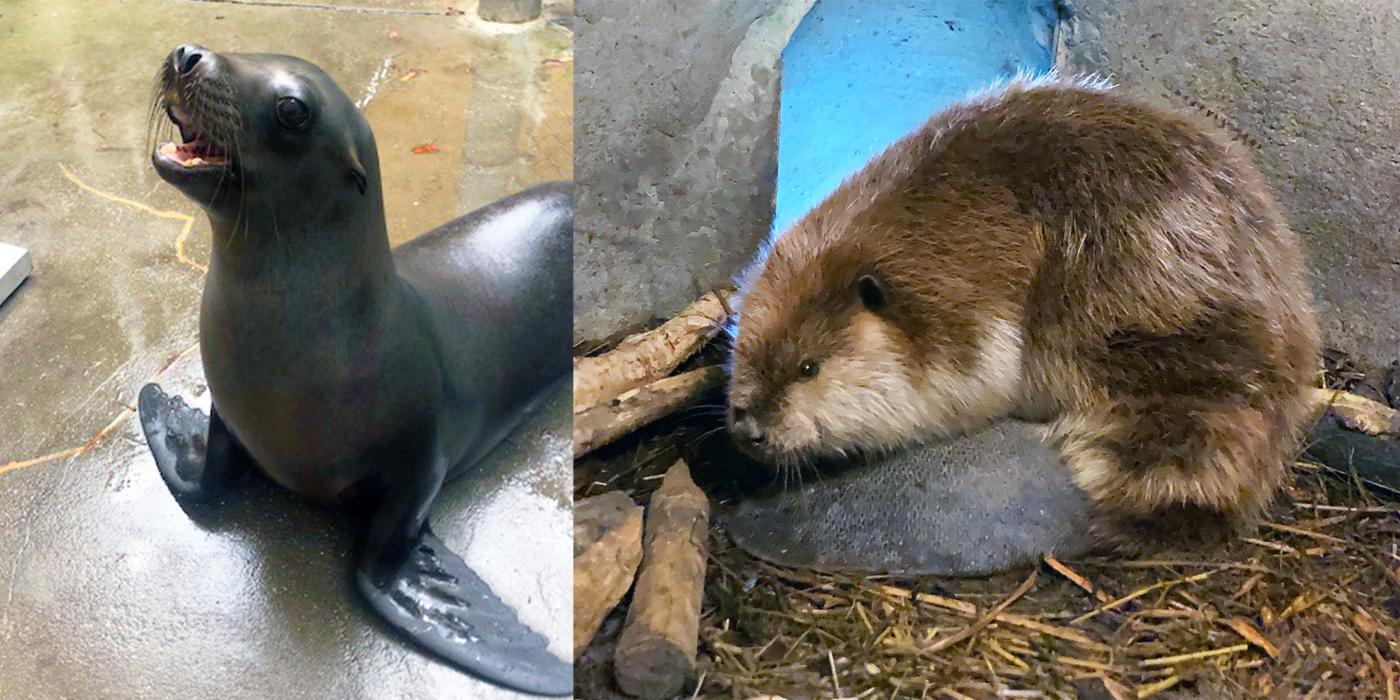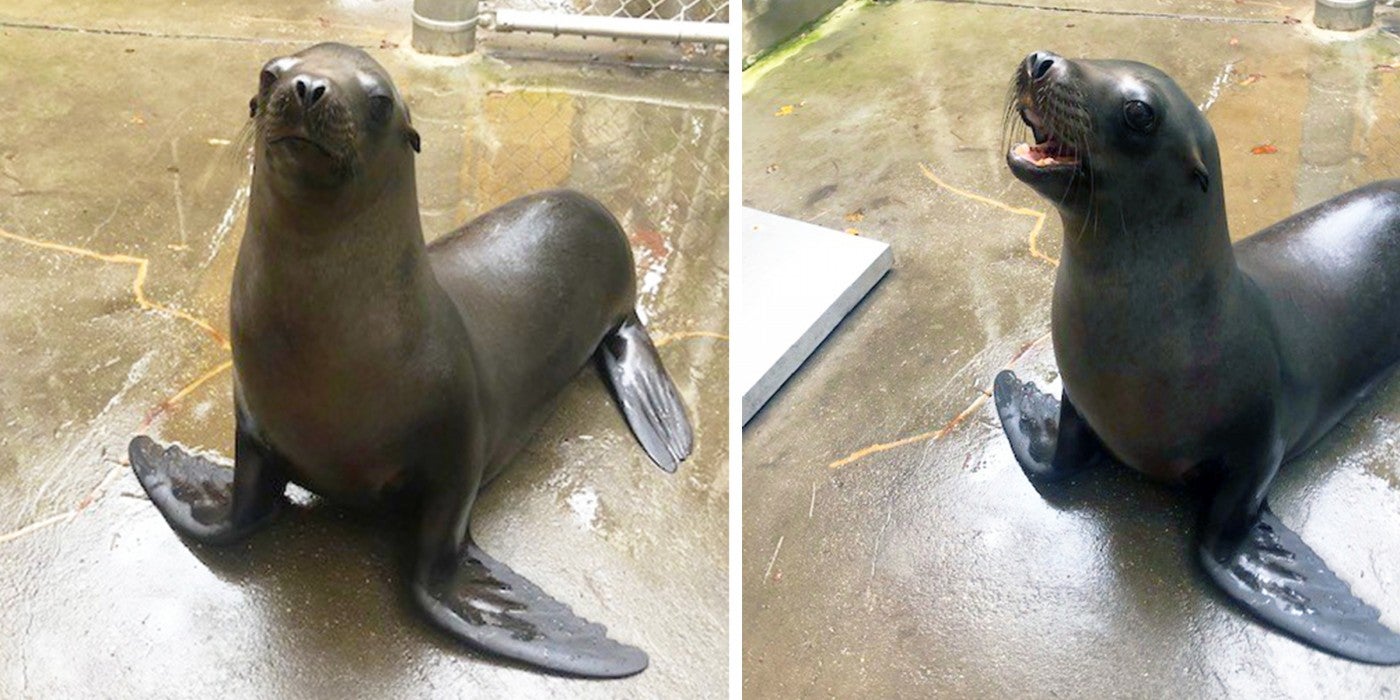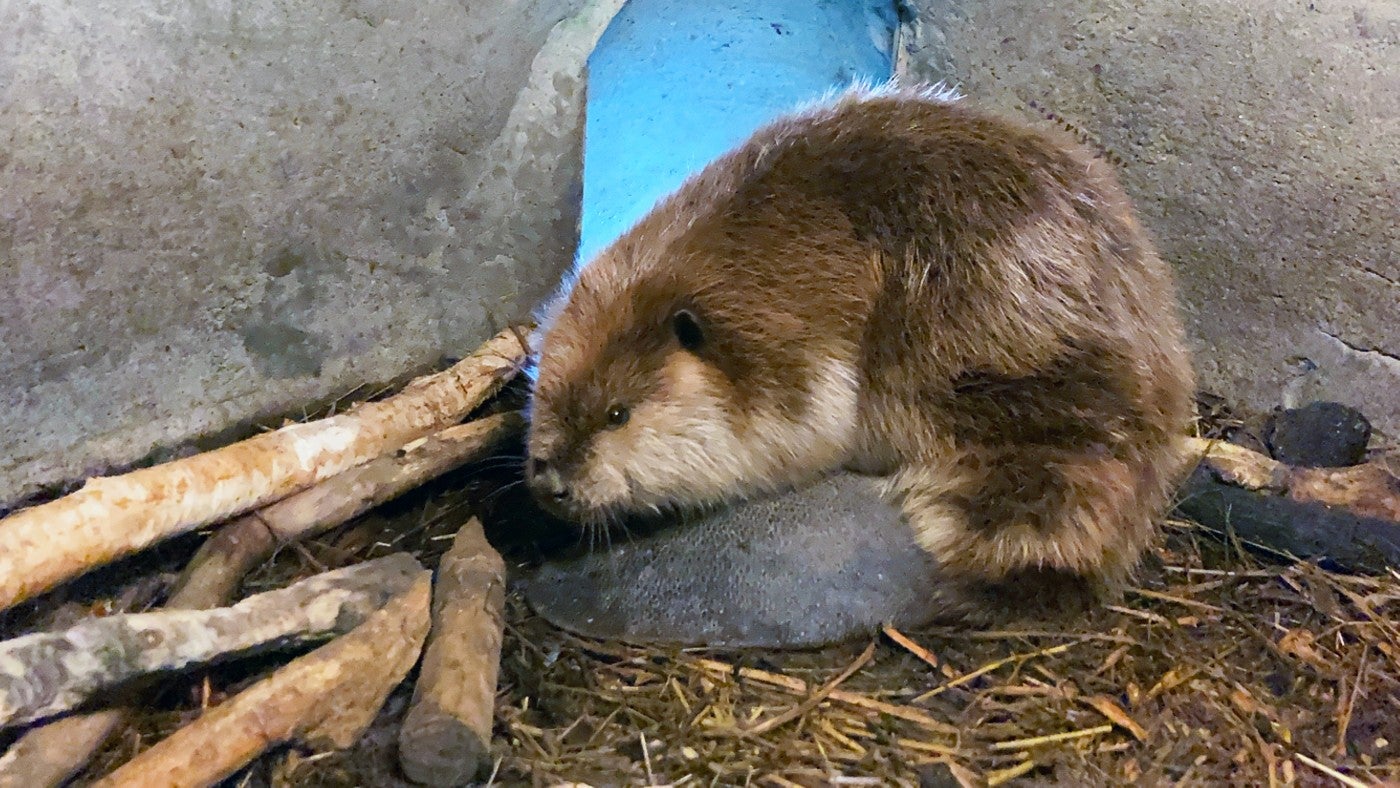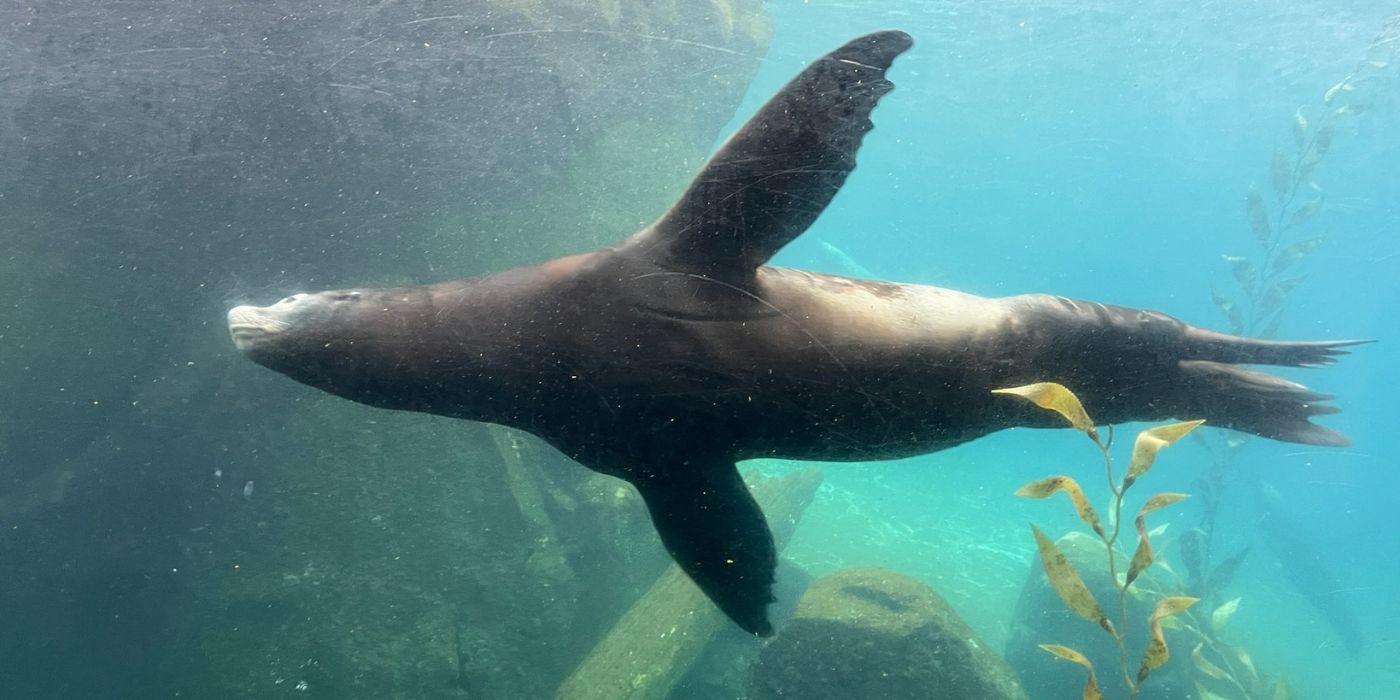Meet the New Kids on the Block at American Trail

There are two new (adorable) kids on the block at American Trail! The team welcomed California sea lion pup Charger and North American beaver Poplar to their new homes at Smithsonian’s National Zoo this past summer. Celebrate their arrival—and get to know them—in this update from keeper Diana Vogel and assistant curator Rebecca Sturniolo.

Look who splashed down on American Trail this summer! Meet Charger, our new 1.5-year-old sea lion who came to us from the Brookfield Zoo in Illinois. When they were searching for a new home for Charger earlier this year, our American Trail team thought he would be an excellent fit for our colony. A few months ago, he joined adult females Calli, Summer and Sidney and Calli’s female pup, 1.5-year-old Celia, on exhibit at the sea lion habitat.
Sea lions are very social animals and tend to not have a defined hierarchy. This made introductions smooth and uneventful. Charger is very confident in himself and showed little to no fear when being introduced to his new environment, keepers and habitat-mates.
Although Charger and Celia are the same age, they are quite easy to tell apart. Charger’s body has a broad build—his head is shaped more like a block, while hers is more narrow—and he is larger than she. He is, however, smaller in size compared to the adults, and his fur has a darker hue. As he gets older and reaches sexual maturity, the differences between Charger and our females will be much for obvious. Eventually, he will be at least twice as large as the adult females and will develop a thick “bump” on his head, known as a sagittal crest.
In the wild, sea lion pups can often be seen playing with and interacting with each other. California sea lions have a specific breeding season and tend to give birth within a couple of months of each other. By welcoming Charger to the Zoo, we are providing him and Celia with the social interaction that mimics what they would experience in their natural habitat.
All of the sea lions are fairly active throughout the day. Charger, especially, plays with Celia often and follows her mother Calli around the habitat. He seems to have a fondness for enrichment toys as well, tossing them around even when they are not filled to the brim with fish and squid! His enjoyment of interacting with others extends to our keeper team as well. Charger has proven to be intelligent and attentive during husbandry training sessions. We are happy with the progress he has made on learning new behaviors that enable us to monitor his health.
One of his favorite spots seems to be the underwater viewing window, which is also one of Sidney’s favorite places to play. See if you can spot who’s who! Mid-morning and mid-day are typically the best times to watch them in action.

Three’s company at American Trail’s North American beaver habitat! Over the summer, 2.5-year-old female Poplar—whom we affectionally call “Poppy”—made her debut. She came to Smithsonian’s National Zoo from the Utica Zoo in New York following a Species Survival Plan breeding recommendation with our young male beaver, Aspen. She also serves as a companion to Aspen and our elderly male beaver, Chipper, as this species lives in social groups. Of the three, she is quite easy to spot, as she is the smallest and lightest in color.
Poppy is, quite literally, a busy beaver! She spends much of her time maintaining the lodge and gathering browse (leafy branches). She is curious and likes to explore every part of their exhibit. At times, Poppy can be shy around her keepers, though the team is making great progress and have even successfully hand-fed her recently!
Chipper, who is 20 years old, gets along swimmingly with our newest resident, and they spend most of their time together. Introductions between Poplar and Aspen have started, though they are not moving as quickly as they did with Chipper. Because Aspen and Poplar are such young beavers, they are still getting used to each other. Keepers are working on creating positive situations where both beavers feel confident, and we are rewarding positive interactions with food. With a bit more time, all three beavers will be sharing the exhibit together. Currently, keepers are rotating Chipper as a companion between Aspen and Poppy.
Poppy is an early riser, and is generally out and about around 10 a.m. every day. Currently, much of the viewing spaces around the beaver exhibit are closed due to COVID-19 in order to safely maintain visitor social distancing. When she has access to the large upper pool, visitors can see Poppy swimming. They also might get a chance to see her when she is eating on the rock in the lower pool.
This story appears in the November 2020 issue of National Zoo News.


